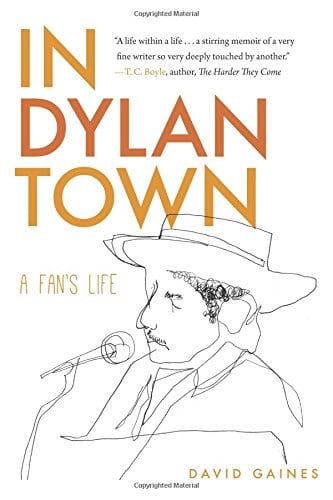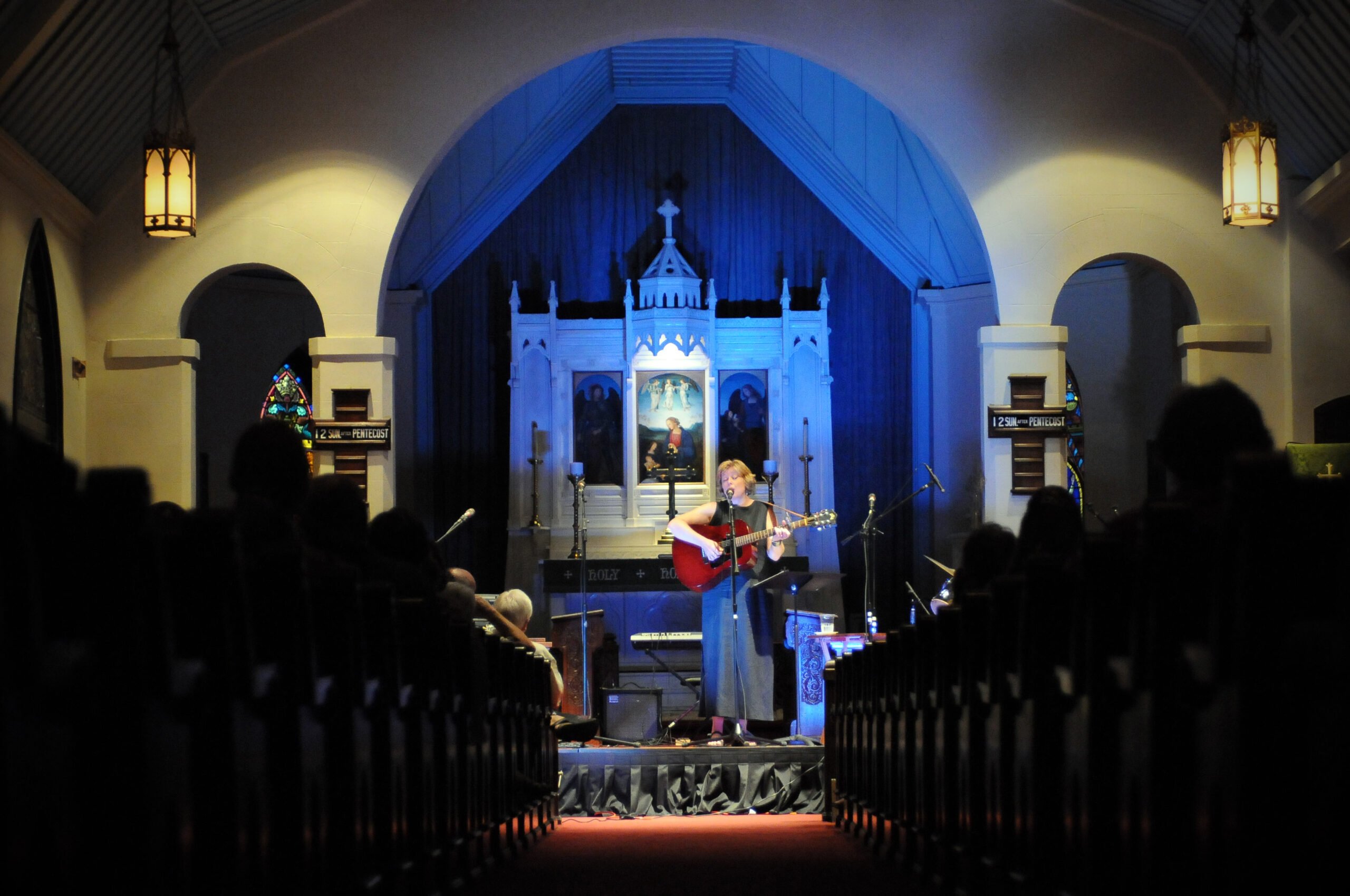
Anatomy of a Dylan Fan: ‘In Dylan Town,’ Reviewed
David Gaines explores the multi-generational magnetism of Bob Dylan, America’s voice for social unrest.
A version of this story ran in the October 2015 issue.

By David Gaines
UNIVERSITY OF IOWA PRESS
149 PAGES; $17 University of Iowa Press
In David Gaines’ faculty office at Southwestern University in Georgetown, there are more and larger pictures of Bob Dylan than of Gaines’ wife and children. When an observant student pointed out the discrepancy, Gaines could only plead guilty and say, sheepishly, “I’ve been with him longer.”
Fanhood is, by definition, a kind of unrequited love. But for Gaines, as for most other lifelong fans, fanhood isn’t about the one-sided relationship between fan and living artist. It’s about the relationship between fan and the creator’s work, and the genuine friendships that form among fans themselves. Gaines’ picture gallery is a nod to a life in conversation with Dylan lyrics and fellow Dylan fans — a life full of mystery, wonder, wit and pleasure. “I did not think his songs held all the answers,” Gaines reflects in his new book, In Dylan Town, “but I loved the way those songs raised so many questions and nudged me to come up with my own answers.”
In Dylan Town takes readers on a charmingly meandering journey through both Dylan fan culture and Gaines’ own history as a Dylan fan and scholar. In the first of the book’s four essays, Gaines acts as an anthropologist in what he calls Dylan Town, sorting his fellow Dylan fans into three broad (and admittedly overlapping) categories: the information gatherers, who collect memorabilia and maintain the fandom’s sprawling websites; the fans who are interested primarily in personal and emotional experiences of the music; and the amateur and professional critics, including Gaines himself, who find pleasure in engaging intellectually with the work.
Though many professional critics would take exception to being classified as fans, Gaines knows that fans can achieve critical distance when they choose to, and that even the most scathing critics are fueled by enthusiasm for a genre, if not for the individual artist. This past summer, when New York Times movie critic A.O. Scott visited Comic-Con, the colossal annual convention of comic fans in San Diego, he was at first alienated by the crowds, but came to wonder if he had a place in them after all. “You may come to worship, but you stick around to question and to judge,” he observed in a Times article.
Like many Dylan fans, Gaines is a bit too preoccupied with the differences between Dylan fans and other fans. (The only difference I’ve noticed is that Dylan fans want to be different than other fans.) It makes sense that fans of “Like a Rolling Stone,” Dylan’s great love song to isolation, see themselves as a breed apart — and are often, as Gaines admits, vaguely embarrassed about their devotion to their aloof hero. But I’d argue that while Dylan fans and Grateful Dead fans and professional sports fans dress and act and dance very differently from each other, they’re all after the same thing: the transporting joy of fanhood itself. From an early age, Gaines knew he wanted to experience the happiness his father displayed in bookstores or while reciting lines from Errol Flynn movies. He soon realized that, like his father before him, he was “a congenital and incurable enthusiast, a natural-born fan.”
When Gaines first encountered Dylan’s music, in high school, he was unimpressed. “At that point in my life, Dylan just sang too fast or too slow and sounded angrier than I wanted to be,” he writes. “I tried to get it, but just did not.” After his father’s early death and a difficult first year at college in California, Gaines started to get Dylan, and when he did, he tumbled head over heels.
Who was Maggie, and where was her farm? What does it really mean “To be stuck inside of Mobile / With the Memphis blues again?”
It has never been easier to be a fan. Today, the most esoteric facts about an artist and his or her work can be found in an instant, along with a digital community eager to plumb them for meaning. But only a few bodies of work have fascinated generations of fans. In the English-speaking world, they include Shakespeare’s plays, Arthur Conan Doyle’s mysteries, Tolkien’s fantasies, Star Trek’s incarnations, Jerry Garcia’s jams, and Bob Dylan’s lyrics. Defenders of the cultural canon might not think those works belong in the same sentence, but each is full of mysteries, and each is open, in its own way, to interpretation. Why did Iago betray Othello? Why did Sherlock Holmes retire to the country? Who was Maggie, and where was her farm? What does it really mean “To be stuck inside of Mobile / With the Memphis blues again?”
Such imponderables not only create lifelong fans but also bind them together. In his final essay, Gaines makes a pilgrimage to Minnesota for Dylan Days, the annual celebration of Bob Dylan’s birthday. On the train from Minneapolis to Duluth (a run advertised as the “Blood on the Tracks Express”), he meets Dylan fans young and old, including Jamie Kallestad, a musician and recent Yale graduate who likens the trip to “meeting some fellow pilgrims in the wilderness.” Dylan’s songs, Kallestad muses, “float freely in time and the meanings grow with you.” Gaines briefly considers moving to Duluth. (“Dad, you’re with your peeps!” teases his adult son.)
There are dark sides to fanhood — the “monster fans,” as Gaines calls them, who stalk or threaten artists, and the fans who escape so deeply into fanhood that they lose touch with their own reality. But for most fans, Gaines finds, the work they adore serves as both lamp and mirror, as one way of better understanding both the world and themselves. Whether they’re critiquing or collecting or simply responding emotionally to the work, they’re experiencing the joy Gaines observed in his father so many years ago. It’s the joy of connecting with great art, of understanding and feeling understood by it, multiplied by the joy of connecting with others who feel the same way. And that, as any fan knows, is love minus zero, no limit.


